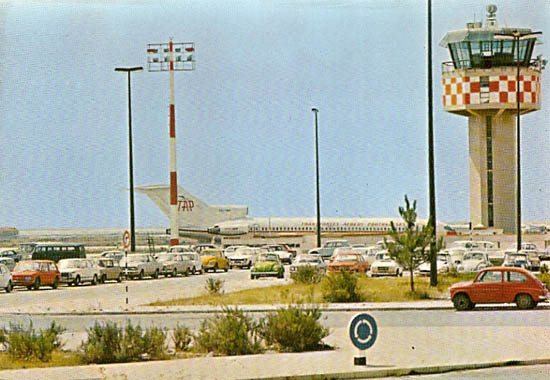
50 years ago, the Algarve lived days of joy. A twenty-year dream was fulfilled, the region inaugurated, on July 11, 1965, its international airport. 76 years after the opening of the Algarve railway to operation and 33 years after the inauguration of the first road link, worthy of the name, to the rest of the country (EN2).
But, if these infrastructures were delayed over time until their materialization, the airport of Faro was no exception either.
The idea of building a large international aerodrome in Faro dates back to 1945. According to José Vilhena Mesquita, it was in January of that year that the Civil Governor of Faro, Antero Cabral, in a meeting, in Lisbon, with the director of the Civil Aeronautics Secretariat, then Lieutenant Colonel Humberto Delgado, was informed that studies were under way to provide the Algarve with an aerodrome.
A month later, Antero Cabral received a telegram from Delgado informing him of the approval of the construction of an airfield in the Arabian site, near Montenegro, a place used at that time by some planes for landing.
It was also communicated to the Civil Governor that the drafting of the project had already been requested from the Ministry of Public Works and Communications, with the aim of being implemented as soon as possible.
The issue of location did not fail to generate some discussion, however, as there were those who defended the Carreira de Tiro or the Quinta da Senhora da Saúde. Places whose lands had a remarkable economic value, in addition to conditioning the city's urban growth.
The choice fell on Arabia, three kilometers west of Faro, an area of low value land, with little earth movement and easy earthworks, not without raising some hesitation, essentially at a technical level, as it is a marshland area.
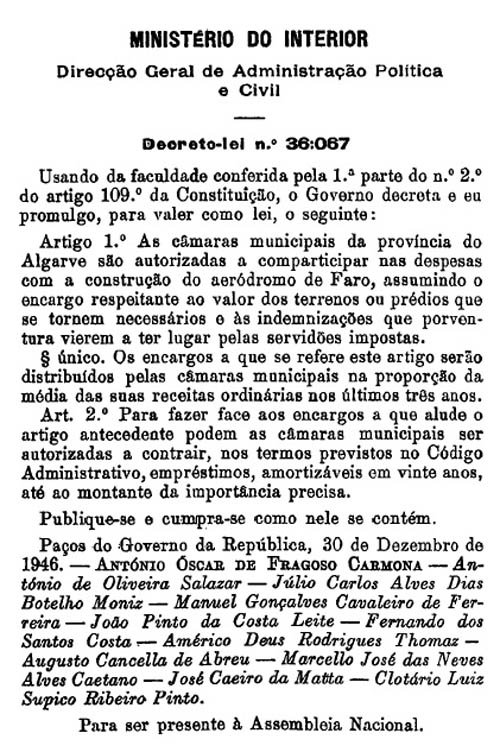 In February 1946, the Technical Office of Civil Aerodromes was carrying out the last works at the conclusion of the project. In turn, on December 30 of the same year, the government, through Decree-Law 36067, determined that the councils of the Algarve would share in the costs of the construction of the aerodrome, assuming the responsibility for the value of the land and eventually with the compensation to take place. Charges that would be distributed among the 16 municipalities in the average proportion of their ordinary revenues in the last three years.
In February 1946, the Technical Office of Civil Aerodromes was carrying out the last works at the conclusion of the project. In turn, on December 30 of the same year, the government, through Decree-Law 36067, determined that the councils of the Algarve would share in the costs of the construction of the aerodrome, assuming the responsibility for the value of the land and eventually with the compensation to take place. Charges that would be distributed among the 16 municipalities in the average proportion of their ordinary revenues in the last three years.
To that end, they were also authorized to take out loans that could be repaid over twenty years.
The measure did not, however, have the intended effects. In January 1951, during the II Algarve Regional Congress, Farense Amadeu Ferreira de Almeida, in his thesis “The Algarve lacks civil aviation”, defended the immediate organization of a hydro-plane service between the Algarve and Lisbon, because, “due to the fault of eight municipalities in the Algarve”, construction of the airport was not progressing.
The lecturer Julião Quintinha, in “Turismo no Algarve”, also listed as fundamental the “renewal of steps for the construction of an airport in Faro".
With the increase in tourism at European level, as well as international recommendations for the structuring of aerodromes, without forgetting the evolution of aircraft (characteristics and means of propulsion), the construction of the aerodrome of Faro it would eventually be passed over to make way for an airport.
Thus, the four lanes initially planned, with an extension of 1200 meters and costing approximately 15 thousand contos, later gave way to a main lane of 1500 meters, transformed, in 1958, into two crossed lanes: one with an extension over 2000 meters, intended for commercial aviation, and another 750 meters, perpendicular to the previous one, for sports and tourism.
Already in 1964, with the work underway, the project underwent new changes, including the extension of the main runway up to 2400 meters, with the possibility of reaching 3000 meters.
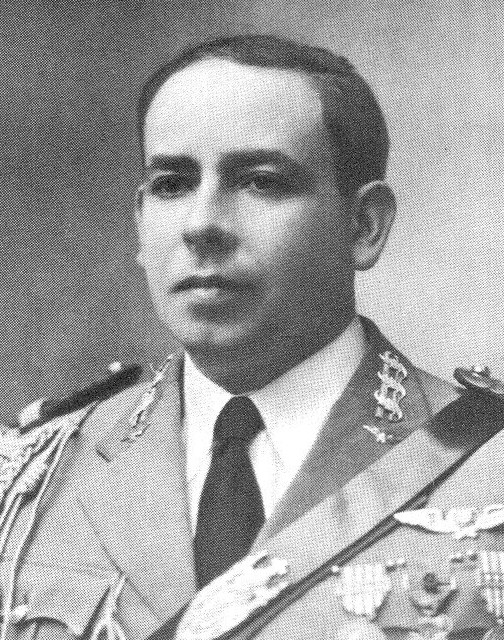
According to the “Diário de Notícias” of 08/07/1965, the acquisition of land, as well as the first works for the construction of the infrastructure, started in 1962. At the end of the following year, the construction of the track began. of circulation and platform.
At the time of inauguration, the airport occupied an area of 1.436.000 square meters, consisting of a runway 2400 meters long, 45 meters wide, paved in asphalt concrete.
Endowed with light signaling to allow night operations, the runway also had side berms 7,5 meters wide, with lightened pavement.
A circulation path measuring 235 x 150 meters established the connection between the lane and the parking platform, this one measuring 435 x 150 meters, allowing ten parking stations.
The total paved area, runway, circulation path and parking platform was 222 square meters. The terminal, operating in provisional facilities, the definitive ones were only planned for 1966-67, occupied 1700 square meters.
Equipped with the respective tower and air control centre, warehouse and emergency power station, as well as telecommunications equipment, in addition to fire, rescue and rescue services, the construction of the airport also required new accesses, as well as the relocation of the road to the beach of Faro.
The total value of the investments, foreseen in the II Development Plan, was around 100 contos. Half of the money was allocated to earthworks, paving and draining the runway, circulation path and platforms.
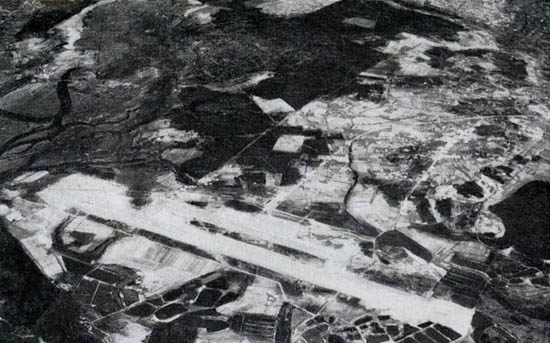
In turn, the construction of buildings, light signage, energy distribution networks, amounted to around 17.300 contos. Personnel expenses were just over 4% of the total investment. Until December 1964, approximately 66.126 contos had been spent, of which 11 thousand were destined to the acquisition of land.
Once the works were completed, the airport's inauguration ceremony, which would be presided over by the head of State, Admiral Américo Tomás, was scheduled for a Sunday, July 11, 1965.
Ironically, the mentor of the great international airfield of Faro and founder of Transportadora Aérea Portuguesa (TAP) in 1945, General Humberto Delgado, had been assassinated by the regime's Political Police five months earlier, after entering a collision course with Salazar, in the early 1950s. Also Antero Cabral did not know the completion of the airport, having died at the age of 65, in 1960.
July 11 dawned festive in the Algarve capital. The ceremony was scheduled for midday, first the inauguration of the road and right after the airport, with the landing of TAP's Super Constellation, “Infante D. Henrique”.
The head of state, who initially planned to travel on the inaugural plane, came the day before by car, staying at the Pousada de São Brás de Alportel. The realization of a 20-year dream was now a reality.
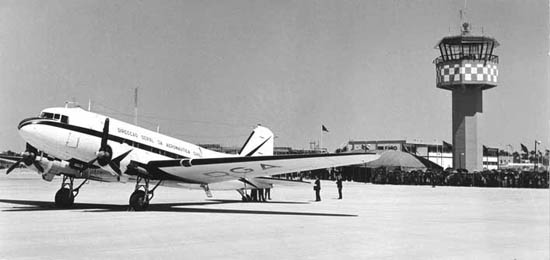
(Go on)
REFERENCES
Blog: http://algarvehistoriacultura.blogspot.pt/
Newspaper “O Século”, 8 and 10 July 1965
Newspaper “Diário de Notícias”, 8 and 10 July 1965
Summary of theses, conferences and communications of the II Algarve Regional Congress, 1950

Author Aurélio Nuno Cabrita is an environmental engineer and researcher of Local and Regional History


















Comments